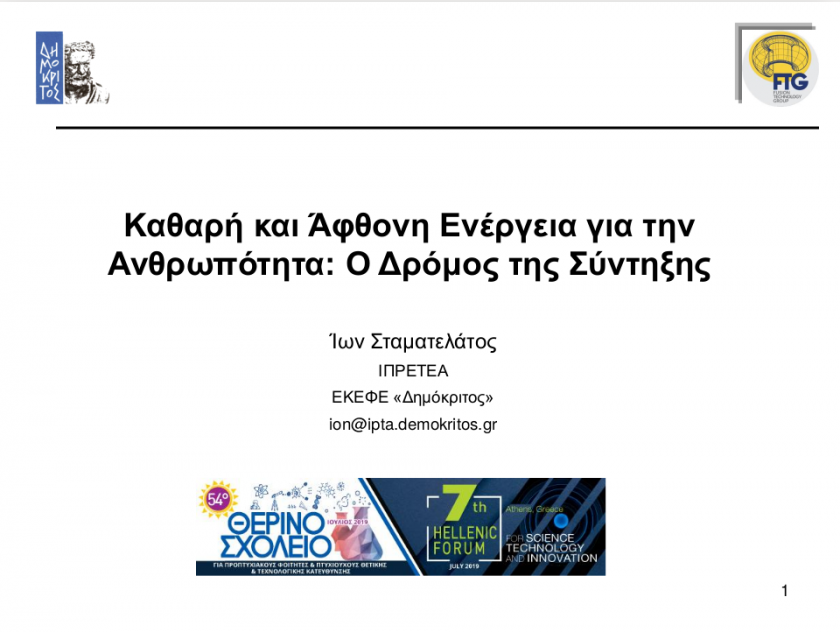Clean & abundant energy for mankind: The way of Fusion

| Start date |
04-07-2019
|
|---|---|
| More info |
Presentation given at the 54th NCS-Demokritos Summere School, July 2019
Abstract:
Meeting the increasing energy needs of our planet requires new methods of energy production, taking into account climate change and the reduction of fossil fuel reserves. Nuclear fusion is one of the most promising options in this endeavor. Fusion is the process by which energy is produced in the Sun. For the production of fusion energy, it is necessary to heat a gas made up of hydrogen isotopes (deuterium and tritium) at very high temperatures, similar to those found in the sun (plasma). One way to achieve these conditions is to limit the plasma with powerful magnets. The most promising method for achieving this goal is the "TOKAMAK". Fusion power plants have many advantages, such as intrinsic safety, zero carbon emission, abundance of fuel, lack of long-lived radioactive waste and reliability in power supply. In addition, it is estimated that they will be able to supply electricity to the grid at a cost similar to other energy sources. The European Thermonuclear Fusion Research Program has set the goal of fusion power production by the year 2050. The main milestones in the fusion power roadmap are three major installations: (a) JET, which is the largest TOKAMAK in operation and a test-bed for fusion physics and technology; (b) ITER, which is under construction and aims to demonstrate the feasibility of sustaining a positive fusion energy gain factor for long periods of time; and (c) the DEMO, which will be the first fusion power plant capable of supplying electricity to the grid. The presentation will provide an overview of the key concepts of fusion, discuss the main objectives of the European program and examine the scientific and technological challenges faced by fusion research today.
View the lecture online or download the slides from the links. (Language: Greek)

